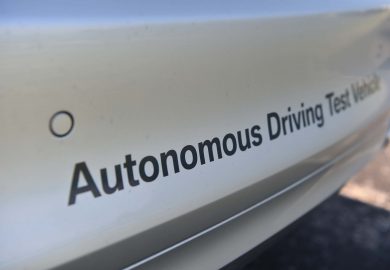Nuro was founded by two former Google software engineers, Dave Ferguson and Jiajun Zhu, who have years of experience working on Google’s self-driving car project. Nuro has developed an autonomous car called the R1. The R1 is more of a delivery van than a passenger car and is intended to go commercial and be used for the delivery of small packages to businesses and individual consumers. (1) Located in Mountain View, California, the firm already has a vehicle built that is ready to take to the roads.
Technology Investments in the R1 Self-Driving Car
The R1 was built by people from Carnegie Mellon University as well as private companies, including Apple, General Motors, Google, Tesla, and Uber, who have robotics, engineering, and software design experience. The company is also working with venture capital partners to ramp up production so that a fleet of the vehicles will be able to take to the streets and provide delivery services. These vehicles will be SAE Level 6 for autonomous cars. The small size of the vehicle, which is about one-third the weight and size of a standard sport utility vehicle, is designed to only navigate on local streets. (1) It has technology that allows it to avoid pedestrians, and Nuro has even designed software that allows the R1 to sacrifice itself to avoid hitting a pedestrian or an animal that is in the street. (4)
How the R1 Will Impact Delivery Services
Nuro intends the R1 to be used for “last-mile” delivery services. (5) For many companies, getting an item to its destination is often most difficult for that last step from a local distribution warehouse. Nuro is still in the process of creating a business model, but it may offer delivery services by subscriptions, charged per delivery, or rented space. The package will be retrieved from the van by the consumer instead of having a delivery person bring it to the door. (6)
The Environmental Friendliness of the R1
The software that is built into the Nuro R1 autonomous car will determine the most efficient route for the deliveries based on consumer scheduling times. The R1 autonomous car is also produced with an electric engine. The vehicles will weigh 1,500 pounds and will have a payload maximum of 250 pounds. (7)
How the R1 Can Be Customized for Commercial Services
Nuro intends the R1 to be customized for a variety of commercial services, such as the delivery of items to a person’s residence. The R1 could be used with businesses such as dry cleaners and florists. The opaque windshield is designed to be unobtrusive to other drivers, and the storage area will be accessible to the consumers who have a delivery. The vehicle measures just 3.5 feet wide, but the inside storage compartment allows for easy access for consumers to retrieve their items. (2)
How Long the Nuro Will Take to Go Live
The team at Nuro estimates that the project will take approximately three to five to complete before the vehicles can be put into mass production and onto the roads. (3) The company still needs to work on some issues, including finding a profitable business model and convincing federal regulators to allow autonomous cars on the road without those vehicles needing to have all the safety features that are designed to protect humans, such as air bags, which would not be needed in an SAE Level 6 autonomous car. (3)
How the Compartments of the Nuro Will Work
The R1 prototype has two exterior compartments, and they can be used for different applications. (4) Ferguson explains that one of the storage compartments in the cargo bay of the R1 self-driving car could be used to cook pizzas en route to a consumer’s house while the other compartment could hold the cold foods such as sodas and salads. A vehicle that is customized for a dry-cleaning service could have cleaned clothing in one of the compartments and dirty clothing in the other. Consumers would have a pass code to access each of the compartments.
Testing the R1
As of 2018, Nuro has a permit from the California Department of Motor Vehicles to test the R1 on public streets. (2) Nuro still needs to obtain permission from the United States National Highway Traffic Safety Administration to test the vehicle on interstates. The testing phase will use its software and robotics on six SAE Level 5 vehicles, and then Nuro will apply what it has learned to its R1 before it amps up the production to build a fleet of the self-driving cars.























